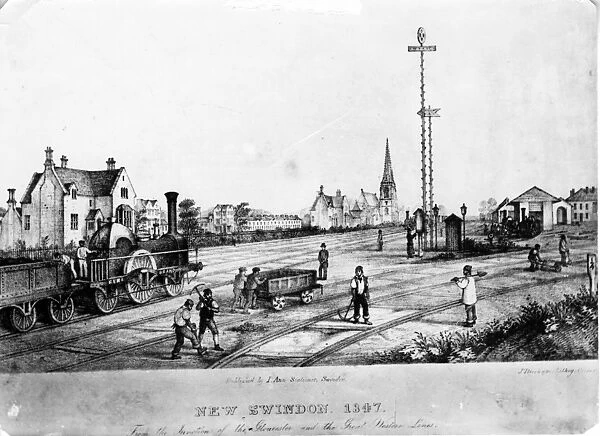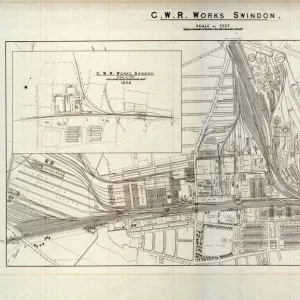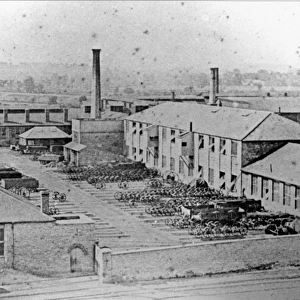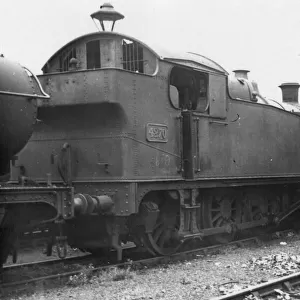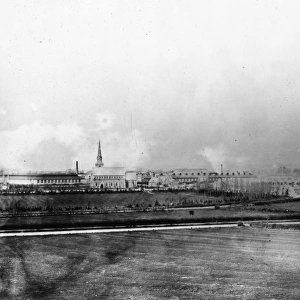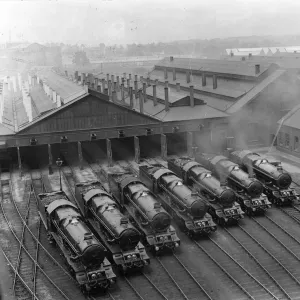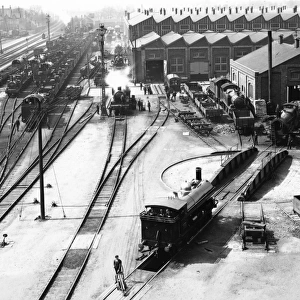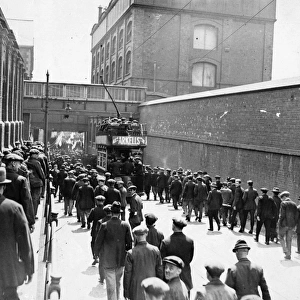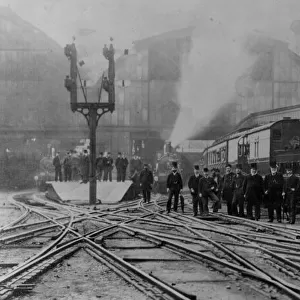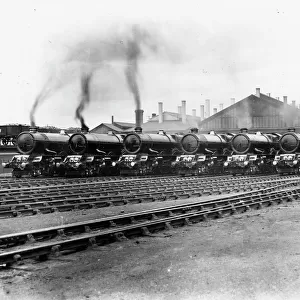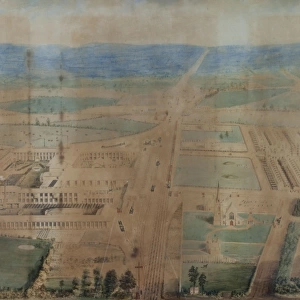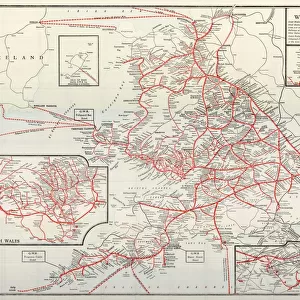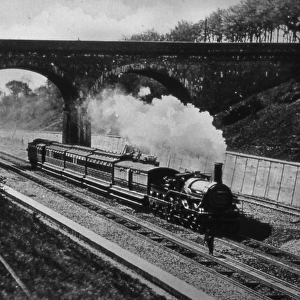Rights Managed > STEAM Museum of the GWR > Locomotives > Steam > Broad Gauge > Broad Gauge Locomotives in Action
New Swindon, 1847
Filename: L1c 183.jpg
Size: 2640 x 1919 (570KB)
Date: 20th February 2007
Source: STEAM Museum of the GWR
© STEAM Museum of the GWR
![]()

Wall Art and Photo Gifts from STEAM Museum
New Swindon, 1847
Lithograph of New Swindon in 1847 with broad gauge locomotive, Fire Brand, in foreground.
Swindon Works can be seen to the right on the image, with the Railway Village to the left
STEAM - Museum of the Great Western Railway
Media ID 413696
© STEAM Museum of the GWR
2 2 2 Broad Gauge Railway Village Swindon Swindon Works Victorian Village Wiltshire 1847 New Town
FEATURES IN THESE COLLECTIONS
> Artwork and documents
> Artwork
> Locomotives
> Steam
> Broad Gauge
> Broad Gauge Locomotives in Action
> Swindon Works
> Maps, Plans & Views
EDITORS COMMENTS
This lithograph, dating back to 1847, offers a glimpse into the burgeoning industrial town of Swindon during the Victorian era. The image showcases the picturesque scene of New Swindon, with its winding roads, quaint cottages, and the idyllic Railway Village nestled to the left. To the right, the imposing presence of Swindon Works can be seen, marking the heart of the Great Western Railway's (GWR) expansion. At the forefront of the scene, the broad gauge locomotive, Fire Brand, proudly displays its power and might. This 2-2-2 engine, a testament to the engineering prowess of the time, would have been a common sight on the railway lines connecting Swindon to other major towns and cities. The broad gauge tracks, which were wider than standard tracks, allowed for greater efficiency and faster travel speeds, making them a game-changer in the railway industry. Swindon, a new town in Wiltshire, had been established in the early 1840s as part of a strategic plan to centralize railway operations and create a hub for manufacturing and repair works. The town's rapid growth during this period is evident in the bustling activity depicted in this image. The railway village, with its neatly arranged houses and lush green spaces, provided a home for the workers and their families, ensuring a stable workforce for the growing railway industry. This enchanting snapshot of New Swindon in 1847 not only captures the essence of a bygone era but also highlights the transformative impact of the railway on the town and its people.
MADE IN THE USA
Safe Shipping with 30 Day Money Back Guarantee
FREE PERSONALISATION*
We are proud to offer a range of customisation features including Personalised Captions, Color Filters and Picture Zoom Tools
FREE COLORIZATION SERVICE
You can choose advanced AI Colorization for this picture at no extra charge!
SECURE PAYMENTS
We happily accept a wide range of payment options so you can pay for the things you need in the way that is most convenient for you
* Options may vary by product and licensing agreement. Zoomed Pictures can be adjusted in the Cart.

